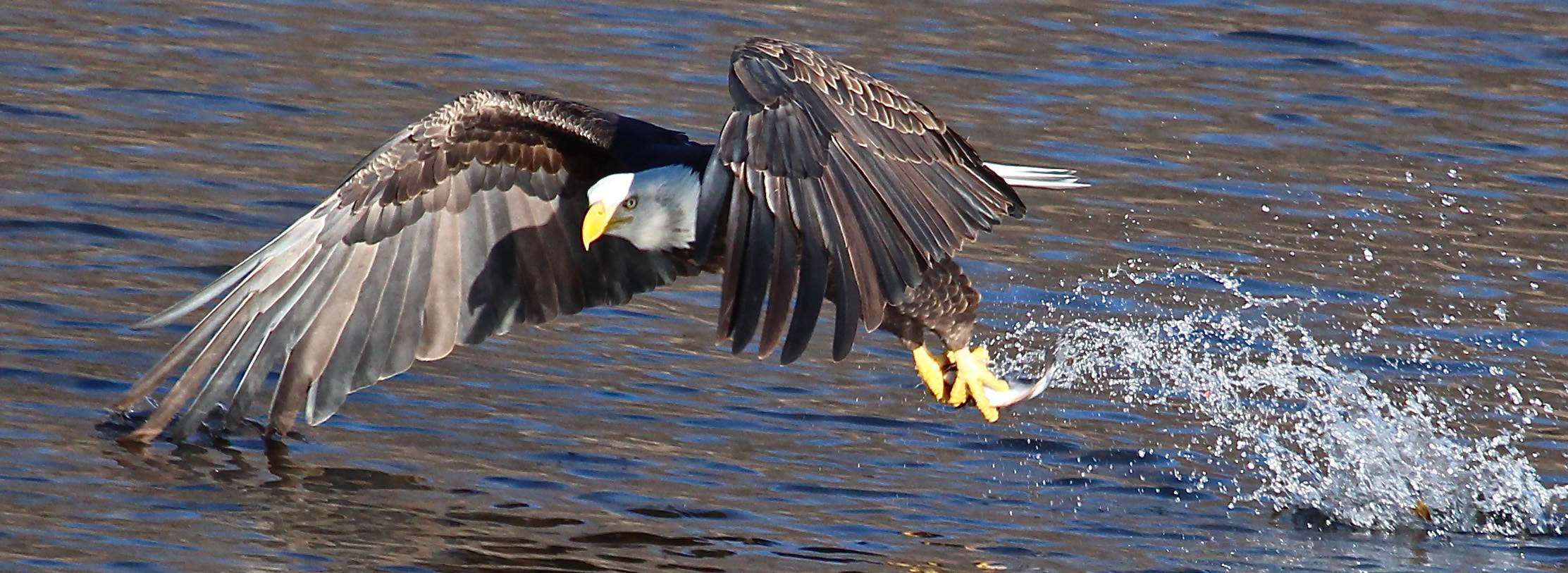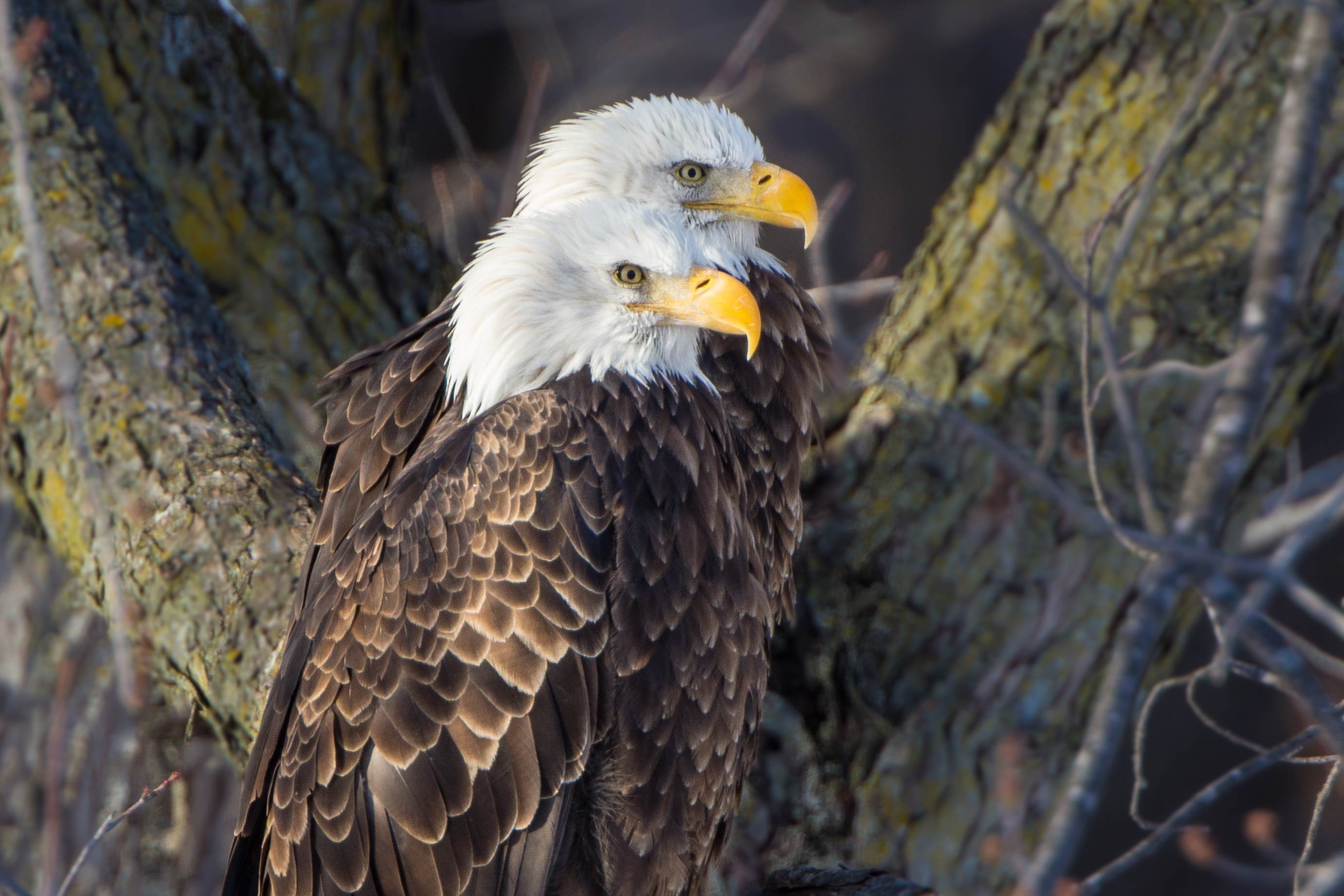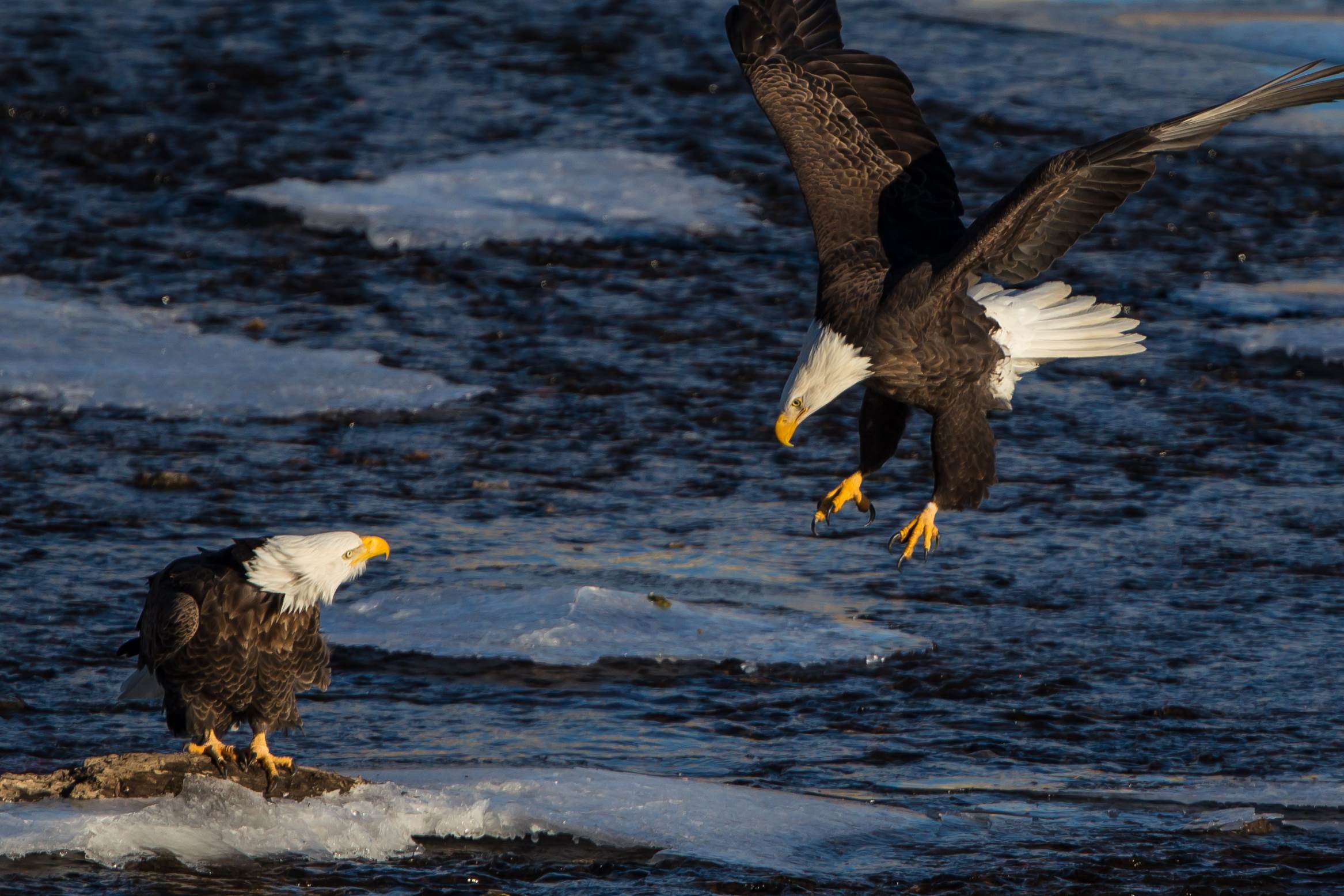Spotting Bald Eagles Along the Des Moines River

Every year, as cold weather, ice and snow makes its way into Downtown Des Moines (DSM), so does one of our iconic wildlife species. While the onset of the winter pushes people indoors and away from nature and wildlife, it also pushes Bald Eagles from their northern summer territories south towards us. The Bald Eagle diet consists mostly of fish. As the lakes and rivers freeze over with ice, the eagles migrate south in search of open water where they can hunt for the food they need to survive. Areas along our rivers that remain free of ice are attractive to the Bald Eagles. They group together in these limited areas that allow for easy access to the open water where they can hunt for fish.
Bald Eagles in the Heart of DSM
Now, it’s common in the winter to see large groups of the eagles in the heart of DSM. Not that long ago seeing even one Bald Eagle was a rare occurrence. The Bald Eagle is representative of a wildlife species that at one time was federally endangered and has since recovered to a sustainable population.
At the time of European settlement, estimates showed around 100,000 nesting eagle pairs in the country. By 1904, the population had declined to such an extreme that there were no nesting Bald Eagles left in Iowa. By introducing protective laws and improved conservation practices, we have brought back the Bald Eagles. It was 45 years ago that Iowa had its first successful Bald Eagle nest after their population decline. In 1985, that number grew to two nesting pairs, jumping to eight pairs in 1988. The population grew large enough that in 2009, Bald Eagles are no longer an endangered species in Iowa. Now, you can find Bald Eagle nests spread across our state, including locations right here in DSM along the river’s trails.
Eagle Activity
DSM eagles become active at their nesting sites around mid-winter and will start laying their eggs in February. The eagles incubate eggs for 35 days, often in snow, sleet and freezing temperatures before the eaglets hatch. The parents feed and protect the eaglets while they quickly grow and take their first flight around 11 weeks.  The young eagles will stay near the nest site for a few more weeks, and by September they will leave their home range.
The young eagles will stay near the nest site for a few more weeks, and by September they will leave their home range.
Not all Bald Eagles we see in DSM during the winter will stay and nest. Most are passing through, taking advantage of the open water and winter fishing opportunities. When the weather warms up and ice breaks, they will disperse. The birds usually depart by the end of February to return to their summer territories. A wonderful location to observe the Bald Eagles is along the Des Moines River between the Scott Street bridge and SE 6th Street bridge. Both bridges have space to park your car or, if you bundle up in warm gear, walk the pedestrian lane. Bring a lunch or snack and sit in your warm car and watch the eagles as they swoop down above the water's surface and grab their food from the river. Usually you can spot eagles sitting in the trees on the south side of the river and down on the ice. Look for the white heads among the dark branches to help find them.
When the birds gather here and the weather is right, Des Moines Parks and Recreation hosts “Pop-Up Programs.” Educational staff will be onsite to answer your questions and have spotting scopes set up to help you view the eagles. If you would like to learn the date and time for future events, text DSMPOPUP to 84483 and you will receive a program notice with full details.
Downtown Des Moines (DSM) is a growing, vibrant community that offers the energy, sophistication, housing and attractions of a burgeoning city with a brilliant future. It’s also easy to visit with plentiful and affordable street and ramp parking options.
Photos provided by Erick Williamson.